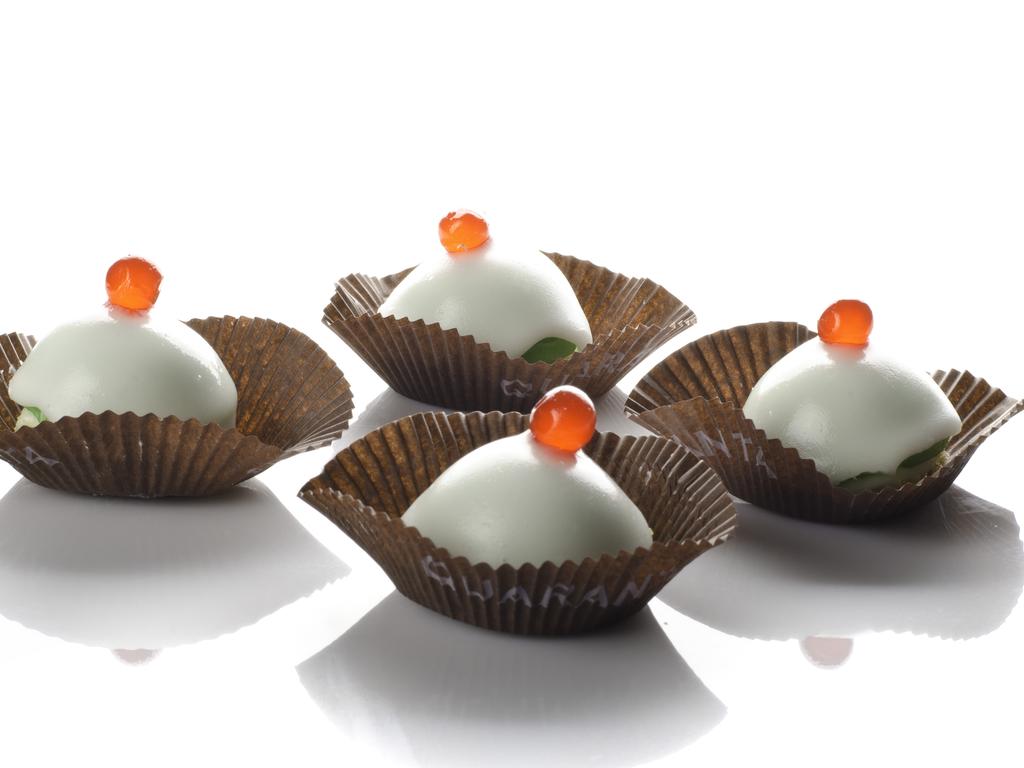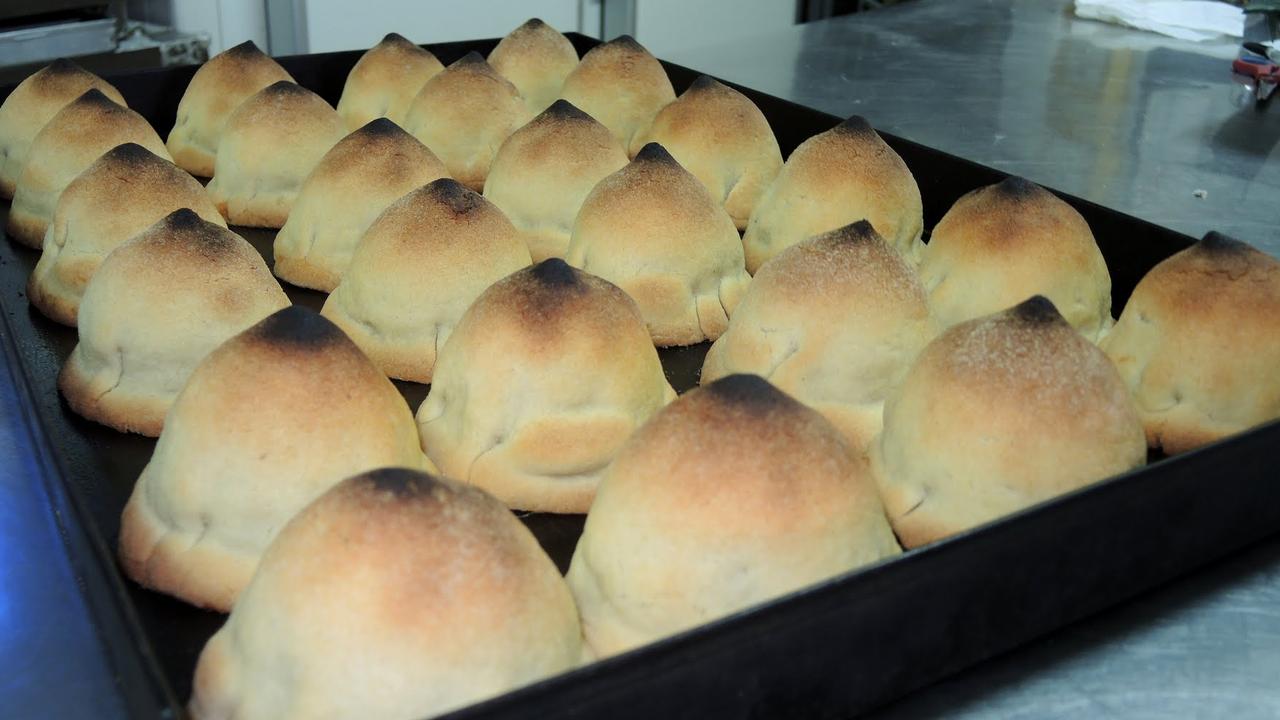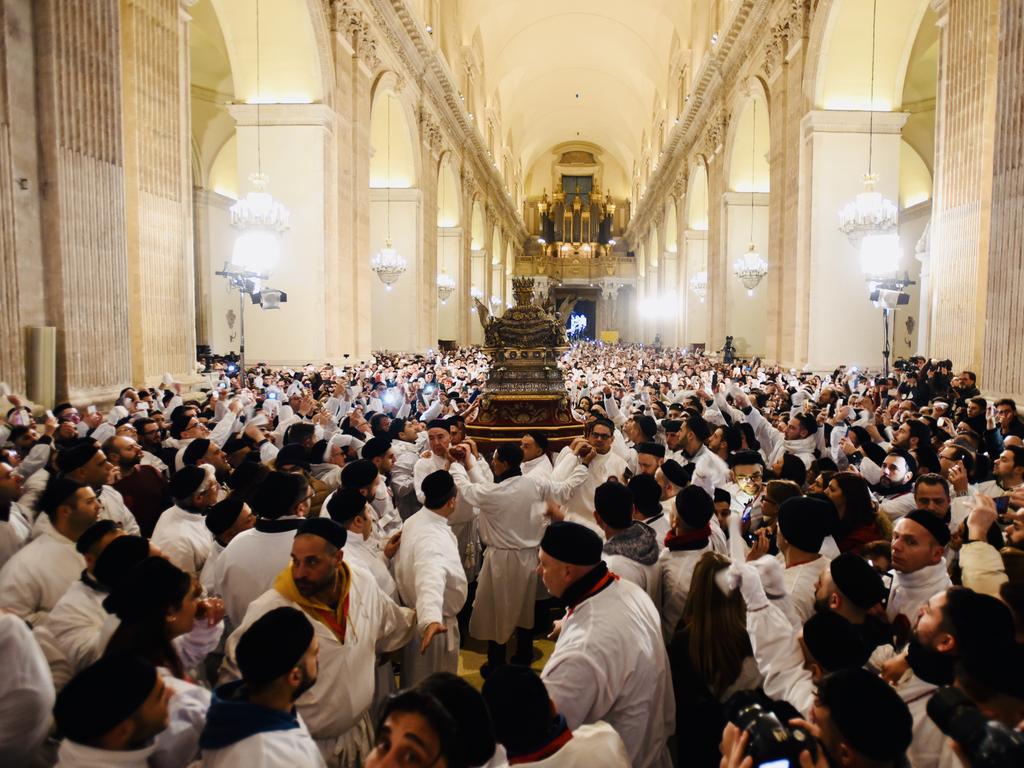Why everyone in Italy is eating nipple cakes
It’s not just you, these cakes are supposed to look like small breasts. And there’s a reason even the most conservative Italians can’t get enough of them.

In Sicily locals love indulging in Minni di Virgini, or, virgin’s breasts.
Don’t freak out, it’s not in a literal sense. They’re just delicious nipple-shaped cakes.
Italians, especially Sicilians, are so religious and pastry-addicted they’ve come up with a sexy dessert to honour the martyrdom of their most beloved female saint, Saint Agatha.
The minni (or minnuzzi) of Saint Agatha are mouth-watering half-sphere sponge cupcakes resembling the breasts of a young woman. Filled with oozing fresh ricotta goat cheese mixed with cinnamon, lemon juice, sweet Marsala liqueur and dark chocolate crumbs, they’re covered in a thick, crunchy icing and topped with a red candied cherry resembling a nipple.
The minni are sinfully irresistible, they melt in the mouth, and many have wondered across centuries why the Holy See never banned such a kinky dessert.


In Sicily religious zeal comes with a sweet tooth. Here, the Holy Teat of Saint Agatha is both a worshipped relic and a signature recipe. So there’s nothing blasphemous in making and devouring a gateau shaped like the breast of a virgin martyr.
The nipple cake comes in several colours (white, green, yellow and light purple) and types.
Each Sicilian town has its own creation. In Catania, where the saint’s cult flourished, they are snow-white with a sparkling coating and perfectly roundish.
In the nearby town of Sambuca they’re soft golden crust muffins without icing, much larger, cone-shaped and with coloured sugar sprinkled over the darker, burnt nipple end.
As sweet as they are, the minni have a dark past.
Saint Agatha was a sweet, Christian teenage virgin living in Catania in the third century who had the misfortune of being harassed and stalked by a lewd Roman consul. Back then, Christianity was not yet a mainstream religion and Christians were persecuted by the cruel pagan Romans. So Agatha was a victim of both her faith and her looks.
She pushed the old guy away and despite his efforts continued to resist — she wanted to become a nun.

The Roman aristocrat got so mad he had her incarcerated, punished and tortured in a gruesome way.
The story goes, he plucked out her breasts with a pair of tweezers. But Agatha’s bosom, thanks to a miracle, grew back and she healed, which only drove her Roman harasser even more angry. At the end she died after he forced her to roll naked over burning coals.
According to the legend, her breasts, alongside other parts of her body, survived the flames and turned into holy relics.
That’s how Agatha became a martyr, giving rise to this strange pastry tradition where Sicilian women and convent nuns make the cakes to honour the young woman’s terrible martyrdom.

If you find a nipple pastry a bit off and irreverent, it is not so for Sicilians.
Sicily is Italy’s pastry kingdom, like Naples is the temple of pizza.
A cake isn’t just a simple dessert but a gala treat. Sicilians believe it is the best, most valuable gift you can give anyone, even if shaped as a breast.
It’s party time now in Catania. Like every year flocks of worshippers are gathering to participate in the saint’s festivity, running two whole months from January to February and luring tourists eager to taste the minni.
Pastry shops are busy baking and selling dozens of minnuzzi each day. Everyone goes in a mystical cake-devouring frenzy.
One of Agatha’s mammella (Italian for nipple) kept in a round glass reliquary in Catania’s cathedral is paraded across town for people to admire and kiss during the celebrations.
Locals line up to kiss also her hand, arm, leg and foot relics preserved inside silver cases shaped like such body parts.

But the breast is the most cherished relic. During the festivity it is taken inside private houses, hospitals, schools and public buildings for blessings. People of all ages beg Saint Agatha for a happy and healthy life.
“She’s everything to us: a sister, mother, friend, protector. We call for her help whenever we are in distress: for breast health issues, smooth childbirth, to help us if we aren’t producing enough milk for our baby,” says local Giacinta Allori.
“Given sublime cakes are part of our Sicilian soul, we thank and worship her with these minni delicacies.”
Locals also indulge in so-called olivette (little olives) to celebrate Saint Agatha, tiny round sweets of almond paste covered in green and black icing.
Legend has it that when Agatha was jailed and starving to death, an olive branch grew into her prison cell so she could pick and eat its fruits.
Sicilians are dead serious when it comes to Saint Agatha’s cult. There is a special moment during the festival when believers pilgrim to the site of her martyrdom, pray, and are granted a clean, fresh start in life. Not a total remission of sins, but a second chance.
“It’s a renewal of Baptismal promises to be good, honest and renounce Satan: we turn the page and look ahead. Agatha wipes our slate clean and the cake embodies all this love”, Giacinta says.



